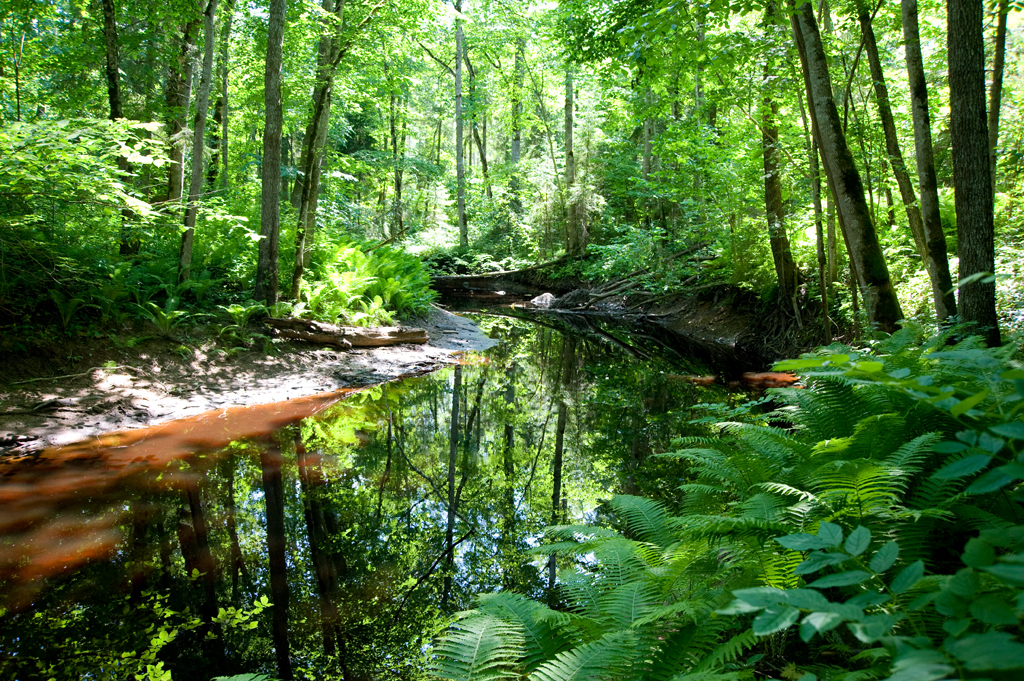
Riparian forests (floodplain forests) cover 50–100 m wide shore embankments running parallel to a riverbed or old rivers (oxbow lakes). Flood water moves rapidly over them at the beginning of the flood, leaving behind the largest, heaviest parts of the substances it carried along as sediments. The embankments slightly higher than the surrounding area have thus been created over time from the sediments carried by the flood water. They remain flooded for a shorter time than the alluvial forests (91E0).
The tree layer is characterised by oak, ash, linden, elm, and white elm, with some individual spruces and pines. The undergrowth is dense and lush. The forest is made denser by the hops covering the trees and shrubs.
Riparian forests are among the rarest forest communities in Estonia. They can be seen in very limited areas on the banks of the Pedja, Halliste, Raudna, Lemmjõgi, Poruni, and Jänijõgi rivers.
Includes the habitat type 1211 (Humulus site type) and the 121 type group (floodplain forests) according to Paal